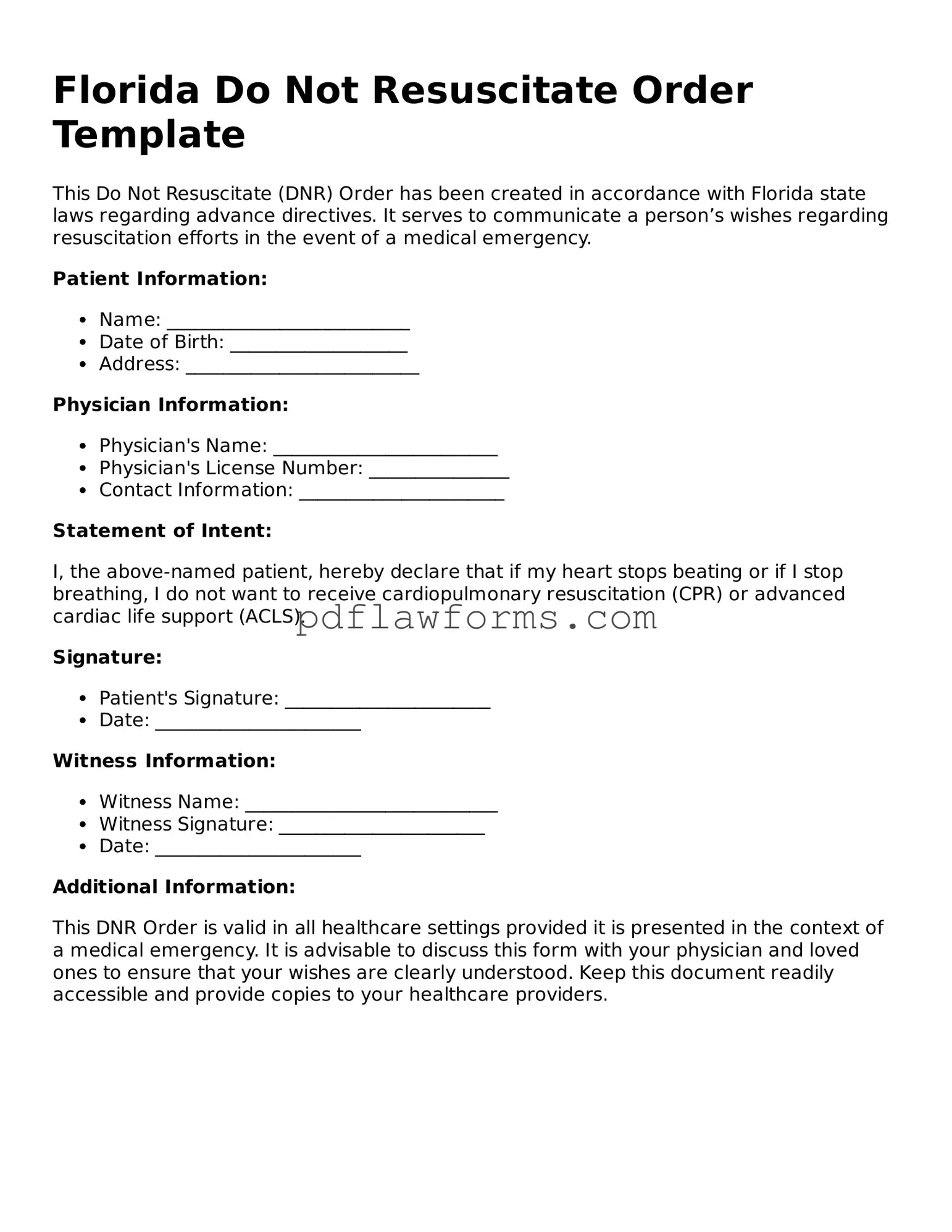Filling out a Florida Do Not Resuscitate Order (DNRO) form can be a critical step in ensuring your healthcare wishes are respected. However, many people make common mistakes that can lead to confusion or even invalidate the document. Understanding these pitfalls can help you complete the form correctly and avoid unnecessary complications.
One frequent mistake is not having the form properly signed. The DNRO must be signed by the patient or their legal representative. If the signature is missing or the person who signed it is not authorized, the order may not be honored. Always double-check that the right person has signed the document.
Another common error involves the date. Some individuals forget to date the form or mistakenly enter the wrong date. This can create issues when healthcare providers need to verify the order's validity. Ensure that you include the date when you fill out the form to avoid any potential misunderstandings.
Inaccurate information about the patient can also be a significant problem. It’s essential to provide correct personal details such as the patient's full name, date of birth, and address. If any of this information is incorrect, it may lead to confusion in emergency situations. Take the time to review all personal details carefully.
Many people overlook the importance of discussing their wishes with family members and healthcare providers. Failing to communicate your decision can result in family members being unaware of your preferences, which can lead to stress and conflict during critical moments. Open discussions can ensure everyone is on the same page.
Some individuals neglect to review the form periodically. Life circumstances can change, and so can your wishes regarding resuscitation. If you haven’t reviewed the document in a while, consider doing so. This ensures that it still reflects your current preferences and that any necessary updates are made.
Another mistake is using outdated forms. Always ensure that you have the most recent version of the DNRO form. Regulations and requirements can change, and using an outdated form might lead to complications when it’s needed most. Check with your healthcare provider or legal advisor for the latest version.
It’s also important to remember that the DNRO must be readily accessible. Storing it in a drawer or a file cabinet can lead to delays in emergency situations. Keep a copy in a visible location, such as on your refrigerator or with your other important documents, so that it can be easily found when needed.
Finally, some people forget to provide copies of the DNRO to their healthcare providers. After filling out the form, share it with your doctor, hospital, or any facility where you receive care. This ensures that your wishes are known and can be honored by those responsible for your care.
By avoiding these common mistakes, you can ensure that your Florida Do Not Resuscitate Order is filled out correctly and that your healthcare preferences are respected. Taking the time to understand the process can provide peace of mind for you and your loved ones.
